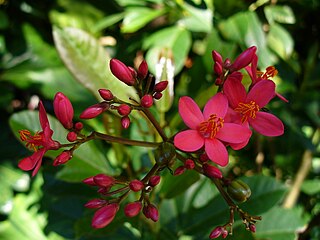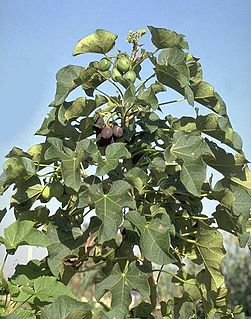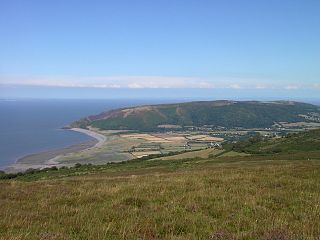Salicornia oil is a pressed oil, derived from the seeds of the Salicornia bigelovii , a halophyte (salt-loving plant) native to Mexico.
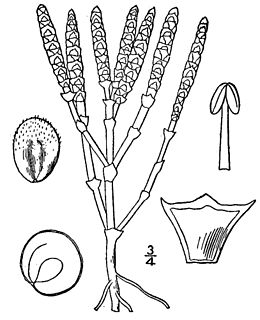
Salicornia bigelovii is a species of flowering plant in the amaranth family known by the common names dwarf saltwort and dwarf glasswort. It is native to coastal areas of the eastern and southern United States, Belize, and coastal Mexico. It is a plant of salt marshes, a halophyte which grows in saltwater. It is an annual herb producing an erect, branching stem which is jointed at many internodes. The fleshy, green to red stem can reach about 60 cm in height. The leaves are usually small plates, pairs of which are fused into a band around the stem. The inflorescence is a dense, sticklike spike of flowers. Each flower is made up of a fused pocket of sepals enclosing the stamens and stigmas, with no petals. The fruit is an utricle containing tiny, fuzzy seeds. The southern part of the species range is represented by the Petenes mangroves of the Yucatán, where it is a subdominant plant associate in the mangroves.
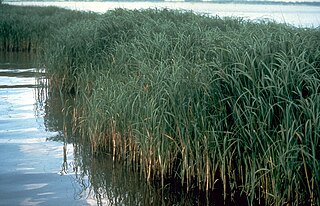
A halophyte is a salt-tolerant plant that grows in waters of high salinity, coming into contact with saline water through its roots or by salt spray, such as in saline semi-deserts, mangrove swamps, marshes and sloughs and seashores. These plants do not prefer saline environments but because of their ability to cope with high salinity in various ways they face much less competition in these areas. The word derives from Ancient Greek ἅλας (halas) 'salt' and φυτόν (phyton) 'plant'. An example of a halophyte is the salt marsh grass Spartina alterniflora. Relatively few plant species are halophytes—perhaps only 2% of all plant species.

Native plants are plants indigenous to a given area in geologic time. This includes plants that have developed, occur naturally, or existed for many years in an area.
The use of salicornia as an oil crop has been championed by researcher Carl Hodges, and was the subject of a 1991 New York Times article. [1] More recently, Hodges and his team have continued their work in Mexico, irrigating fields with sea water in farms near the Gulf of California. [2] Salicornia seeds contain 30% oil by weight, compared to 17-20% for soybeans. The oil itself contains 72% linoleic acid, which is comparable to safflower oil. [3]

Carl N. Hodges is an American atmospheric physicist and founder of the Seawater foundation. He is the main driving force behind ideas of using sea canals to irrigate deserts.

The New York Times is an American newspaper based in New York City with worldwide influence and readership. Founded in 1851, the paper has won 125 Pulitzer Prizes, more than any other newspaper. The Times is ranked 17th in the world by circulation and 2nd in the U.S.

Mexico, officially the United Mexican States, is a country in the southern portion of North America. It is bordered to the north by the United States; to the south and west by the Pacific Ocean; to the southeast by Guatemala, Belize, and the Caribbean Sea; and to the east by the Gulf of Mexico. Covering almost 2,000,000 square kilometres (770,000 sq mi), the nation is the fifth largest country in the Americas by total area and the 13th largest independent state in the world. With an estimated population of over 120 million people, the country is the eleventh most populous state and the most populous Spanish-speaking state in the world, while being the second most populous nation in Latin America after Brazil. Mexico is a federation comprising 31 states and Mexico City, a special federal entity that is also the capital city and its most populous city. Other metropolises in the state include Guadalajara, Monterrey, Puebla, Toluca, Tijuana and León.






